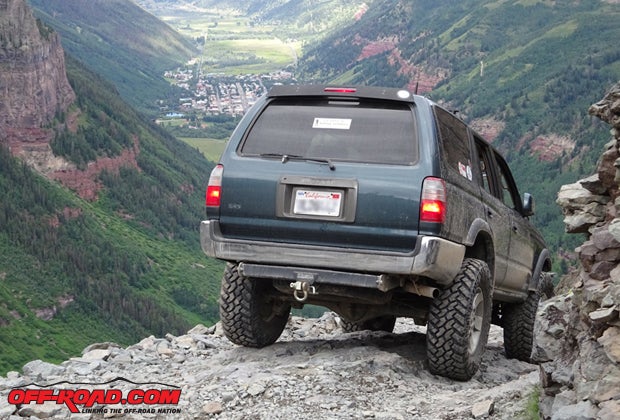
Because we can’t help poking bears with sharp sticks, we decided to tackle one of southwestern Colorado’s most famous (and purportedly hazardous) trails. Our reasoning was straightforward: 1. Because it was there; 2. because it couldn’t be as bad as people say; 3. because when people say it’s bad, well, that’s like a big fat “Now I gotta.” What we discovered about Ingram/Black Bear Pass Trail (some locals and maps call it Black Bear instead of Ingram; the U.S. Geological Survey Board says Ingram) is that while the ingress to the trail is scenic, engaging but not overly tough, and the drop-in can be tricky, the actual descent to Telluride is more scary than difficult.
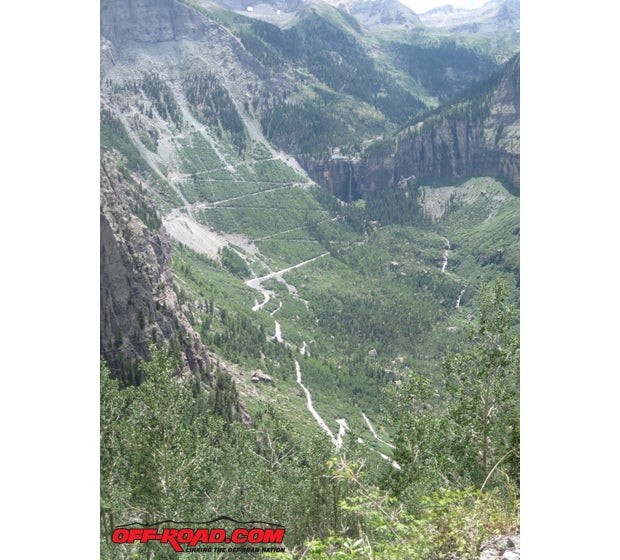
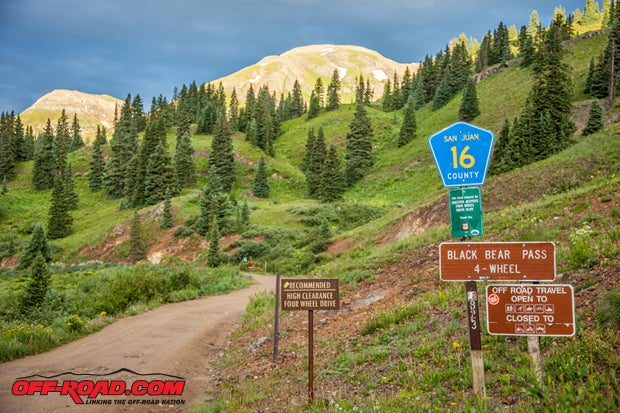
If any spot is to be worrying, it’s the rock ledge drop-in that leads to the beginning of these notorious switchbacks: it’s more technical than the switchbacks themselves, and holds at least as much potential for your demise.

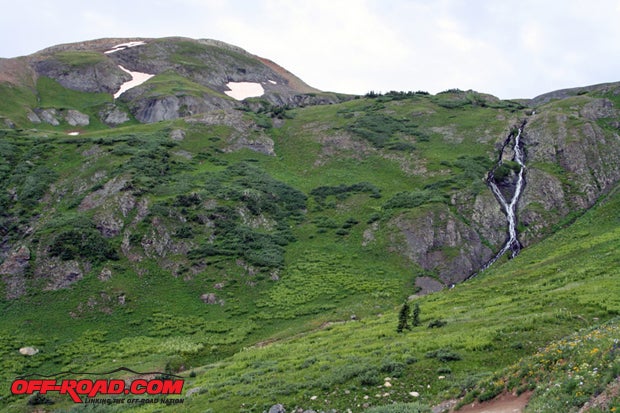
A little history: Ingram/Black Bear is known for a famously precarious section of trail that switchbacks down the somewhat shear lower face of Ingram Mountain. This little slice of doom alongside Bridal Veil and Ingram Falls is not more than 1/10th of the trail (and starts just below Westinghouse’s first industrial A/C powerplant, which helped establish Tesla’s A/C generating method versus Edison’s D/C), but is not as dangerous as it is reputed to be. Long story short, unless you’re a convicted idiot, you can do this trail.
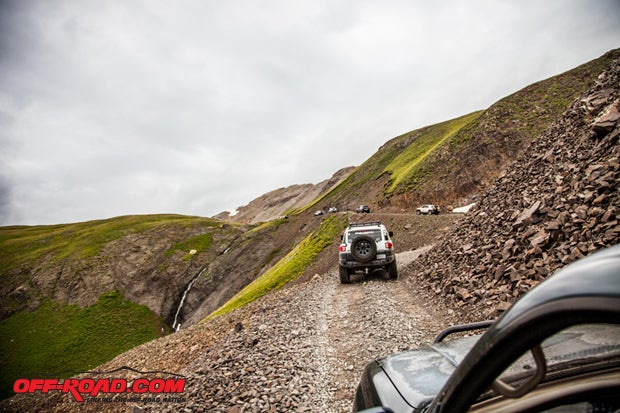
Run This Trail Yourself: Just Add Truck
Easier than advertised, sure, but a properly equipped truck is required to handle this run. Trail-friendly tires, a predictable locker, honest low-range, capable articulation and good brakes are a must. So is a skilled driver: always develop yourself at least as much as your truck. We have seen stock FJ Cruisers and Rubi Jeeps do this trail with a competent driver behind the wheel, but that’s more the exception than the rule: we’re not suggesting you run this in the Subaru Forester your mother drives to work (or your dad’s Suburban – the turns are too tight). However, if you’re felony stupid and can’t recognize that this trail could kill you, then our admonitions about using a well-hung truck won’t save you (and you’re probably reading this in a hospital waiting room).
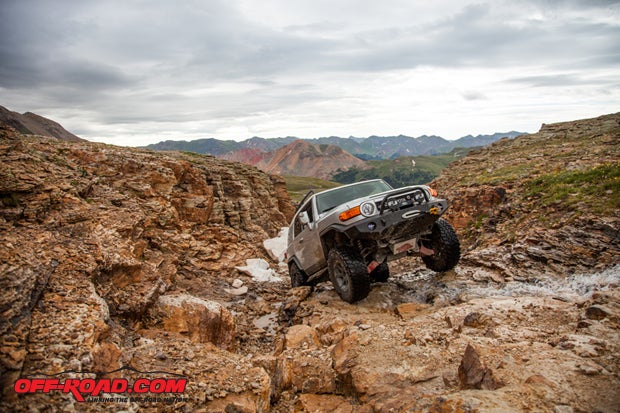

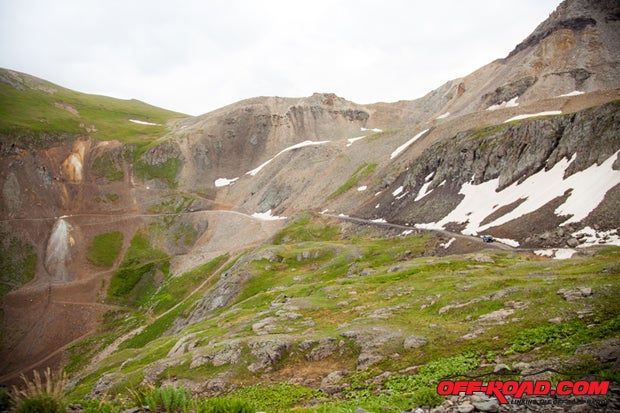
In some respects, the western run to the top of Ingram/Black Bear trail is better than the drop-in to Telluride. Wayout scenery, some high-Q trail features (in the trail-then-obstacle-then-trail style of most Colorado crawling), and enough “That’s pretty” to keep passengers who prefer flowers to ‘froading from biting your head off. This region was heavily mined, like so many in high-mountain Colorado, so a well-read adventurer will be able to put their hands on copious historic spots; you’d be advised to take your time on the run-up. To our chagrin, our group, a part of the tenth-annual FJ Summit, was pressed to keep our pace up (we were the first of six run groups on this trail that morning).
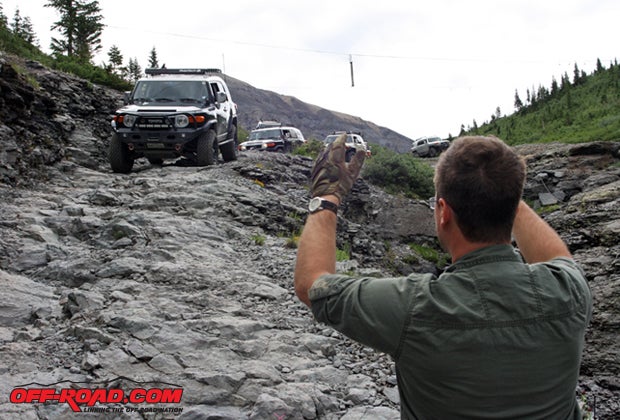
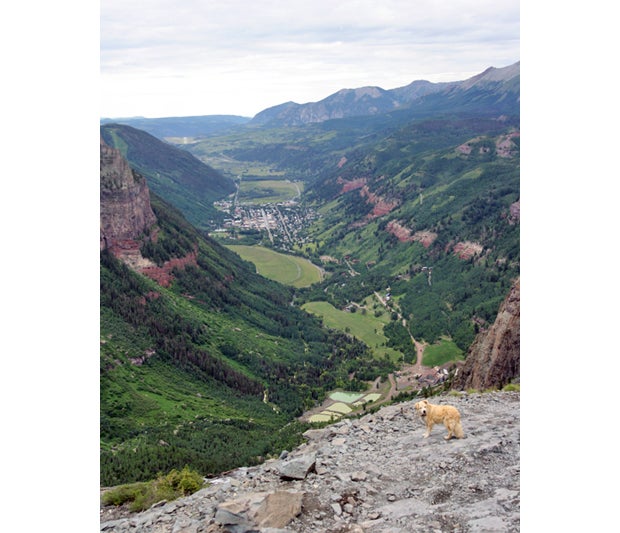

Several turnoffs peel away from the trail en route to Black Bear Pass (12,840 ft.). While it’s always recommended you explore shunt roads – some of our best off-roading has been found on trails off of trails – it’ll quickly turn a brunch run into a daylong adventure. Note: some of these trail spurs are more “closed” than others, but don’t cheat yourself out of something great because you didn’t check if a gate was locked locked. If you see a juicy spur and have time, run it.
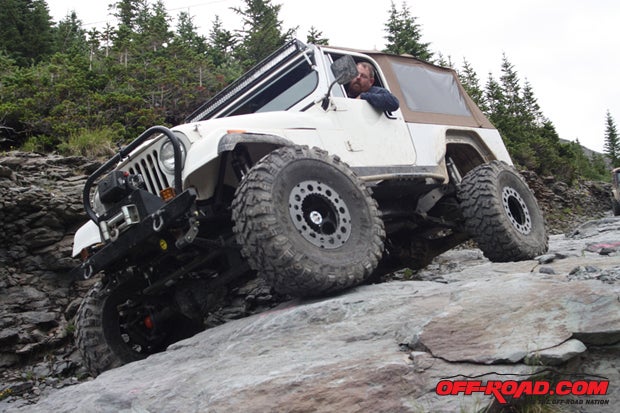
Getting In: Because Every Trail Begins Somewhere
Although Ingram/Black Bear is done against the grain once a year (heading east from the Telluride end, thanks to the Wild Bunch 4x4 Club out of Montrose, CO), on every other disappointing day of the calendar, the only option that won’t anger fleets of Jeeping tourists is to begin from the east. The relatively well-marked turnoff is either 10 minutes south of Ouray or 40 north of Silverton on Colorado’s marvelous State Route 550. Just across from the Red Mountain town-site, access begins with County Road 16, which peels off to become the 823.
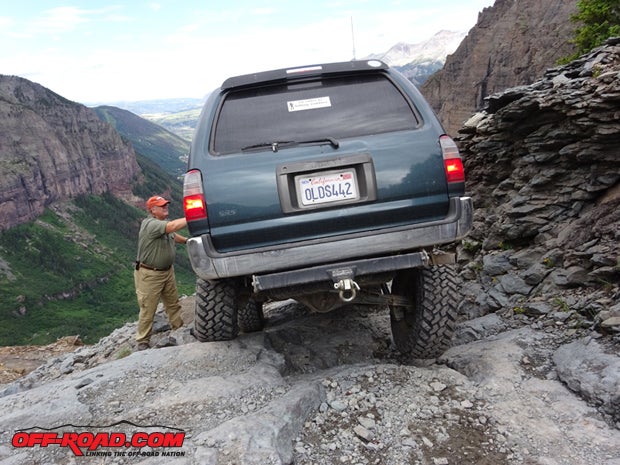

The first 40% of the climb from Highway 550 – first on County 16, then on Forest Road 823 – is the easiest. You’ll climb and climb, passing multiple turnoffs and fields of mountain greenery that have been known to burst into rainbows of floral song, but tree line and most flora quickly disappear behind. With altitude, lumpy sections of trail increase, including low-range climbs with lots of water and snow, even in late July. There are workarounds, but playful trail challenges like those arrayed uphill towards Black Bear Pass are the sort that build driver skills.
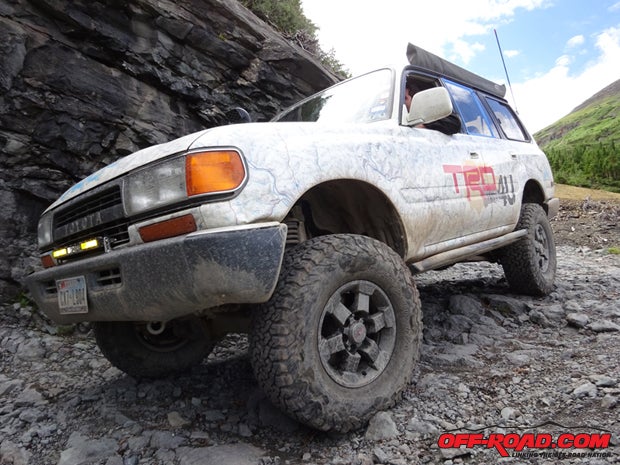
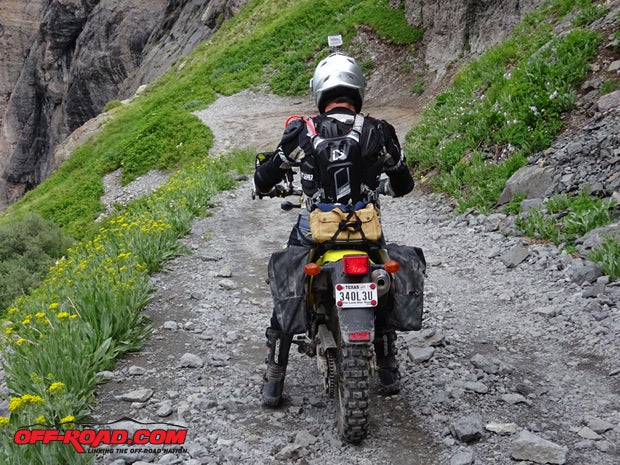
With the easy climbing behind you, mining remnants and plentiful rock and ledge-style shelves increase. We’ve said it before and we’ll say it again – make the time to turn off-route and explore, and get out of your truck to dig around. A localized map with old mining claims will help you get closer to the interesting bits of history that still litter the crags up here. Mines like the Senator Beck, Andrus, Mayflower, Black Bear, Smuggler/Union and associated portals, adits and tunnels laced the area. The mining equipment supporting them was on display for 100-plus years (the area mined as recently as 1978), and several still-suspended tramlines to the Pandora Mill in the lower valley signal that it’s all in there, if just a little beneath the surface.


Dropping towards Telluride west of Black Bear Pass, the trail grows steadily tighter and lumpy as you pass Ingram Lake into Ingram Basin. The scene of more hard-rock digging (and full of hidden mine workings), this high alpine landscape is worth your attention. At this point, the trail isn’t the precipitous drop-off that Ingram/Black Bear is known for, but it’s rife with tricky nooks and crannies that make a 10-mile run like this memorable. Black Bear and Andrus Mines are accessible via turnoffs below and west of the pass, in the shadow of 13,509ft Telluride Peak.

The Terror Before the Terror, and the Terror that Isn’t
You’ll know you’re at the pre-drop staging zone for the “Switchbacks of Doom” by how the trail necks down below Ingram Basin at the funnel of Ingram Creek. Multiple structures (the remnants of such, anyway), several tram cables, and the remains of a cable footbridge overhang the drop-in. This mostly off-camber ledge, carved right out of the creek’s rock bank, hugs a craggy wall and curves lazily to the right (though it slopes much less lazily). In our opinion, THIS is the most difficult section of the trail, and with little room for error, you’d best know your path. The fine folks from the FJ Summit provided spotters for this section of trail when we ran it (with more here than the switchbacks, which should tell you something).
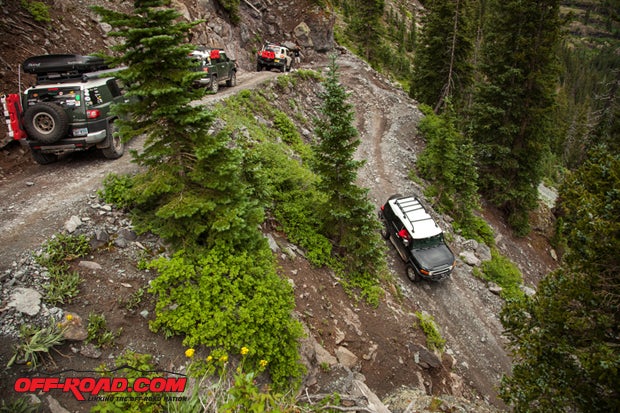
Past the craggy rock right-hander are the famous Ingram/Black Bear switchbacks. Don’t kid yourself: they are awesome, and more than a few dead people would attest to the hazard in this section of trail. That said, a careful crawler won’t have any problems. From what we’ve been led to understand (and as seen online), it’s carelessness that gets people hurt, not the trail itself. Then again, the miners who worked the high mines used to sled down this hill to get to Telluride (real men...). Enjoy the view.

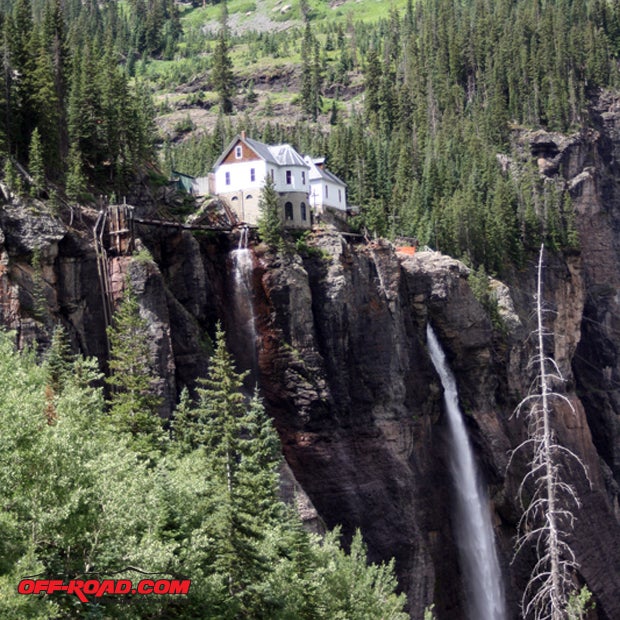
While cosseted in this delightfully hazardous section of the Ingram/Black Bear Pass Trail, you’ve got a few minutes to think about what it stands for: about a mile below is the recently schmaltzy city of Telluride (once a haven for cattle rustlers and outlaws, now infested with hipsters and poseurs), while within arm’s length are real remnants of the hard won history of Colorado’s past. There are fancy people driving fancy cars to fancy bars who could use some help getting in touch with that history, that what let them have a Telluride in the first place. Do them the favor of running this iconic trail and telling the uninitiated all about it (preferably after they buy you a beer).
MORE OFF-ROAD STORIES
What is Overlanding?
Road to the Summit: Toyota, Expedition Overland and an Epic Off-Road Journey


 Your Privacy Choices
Your Privacy Choices